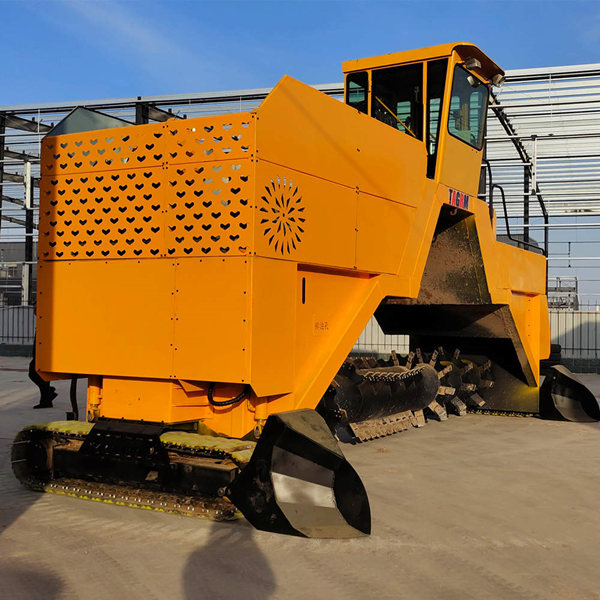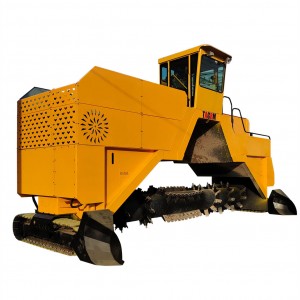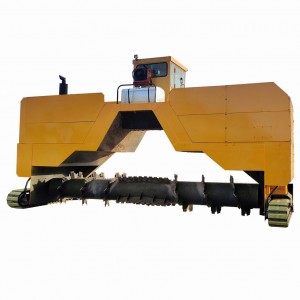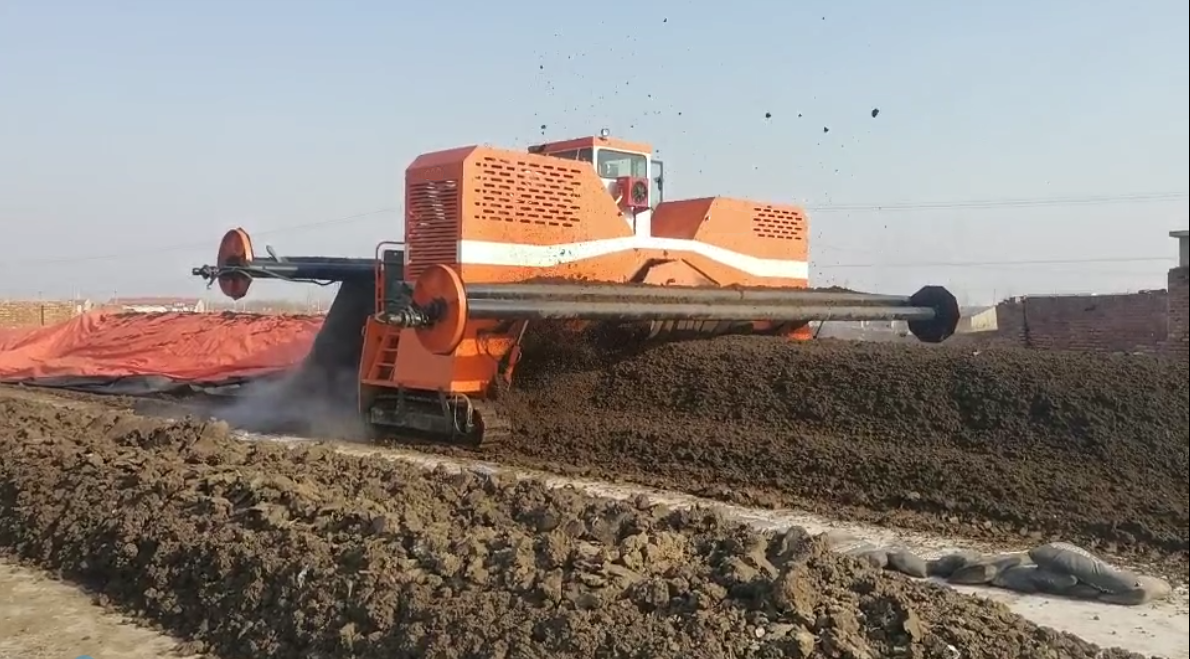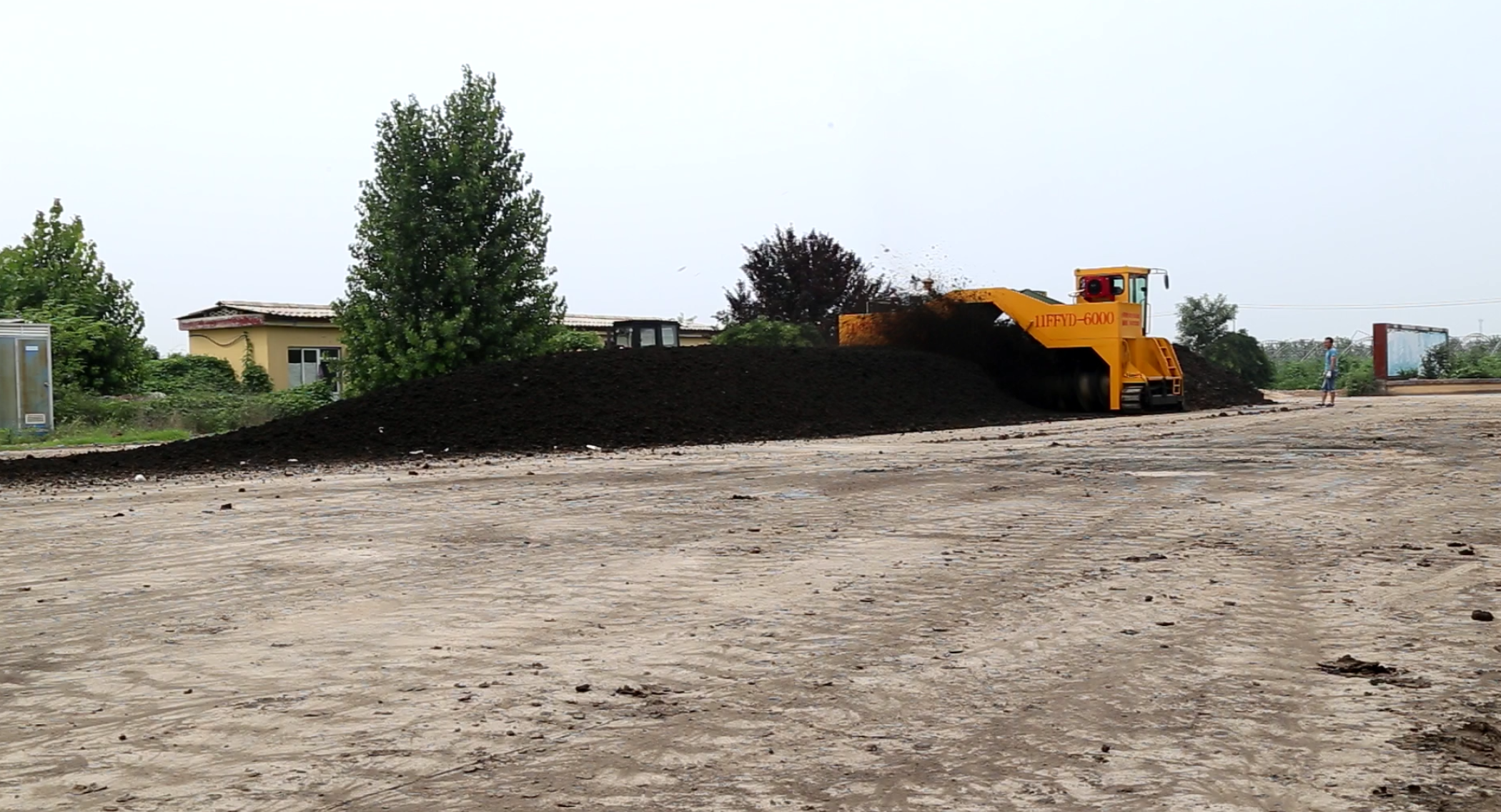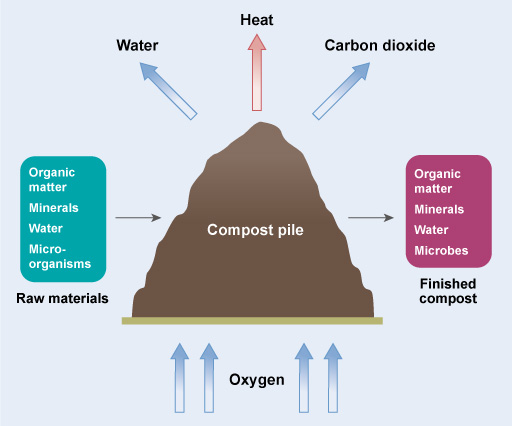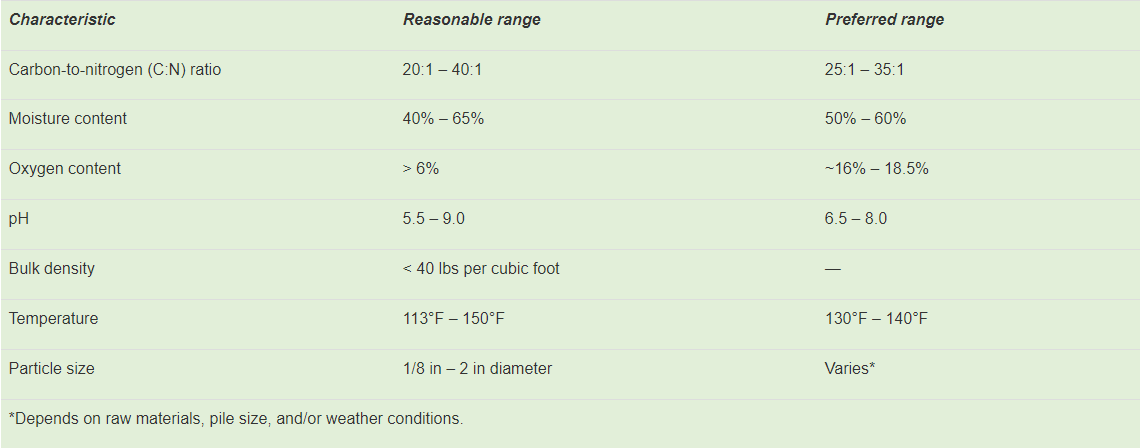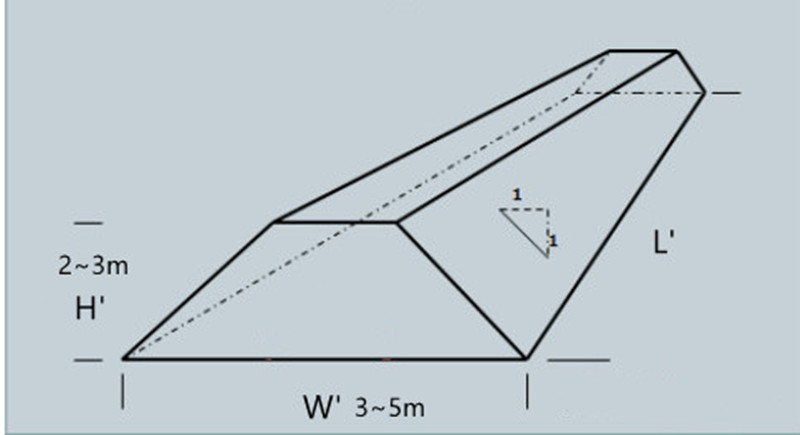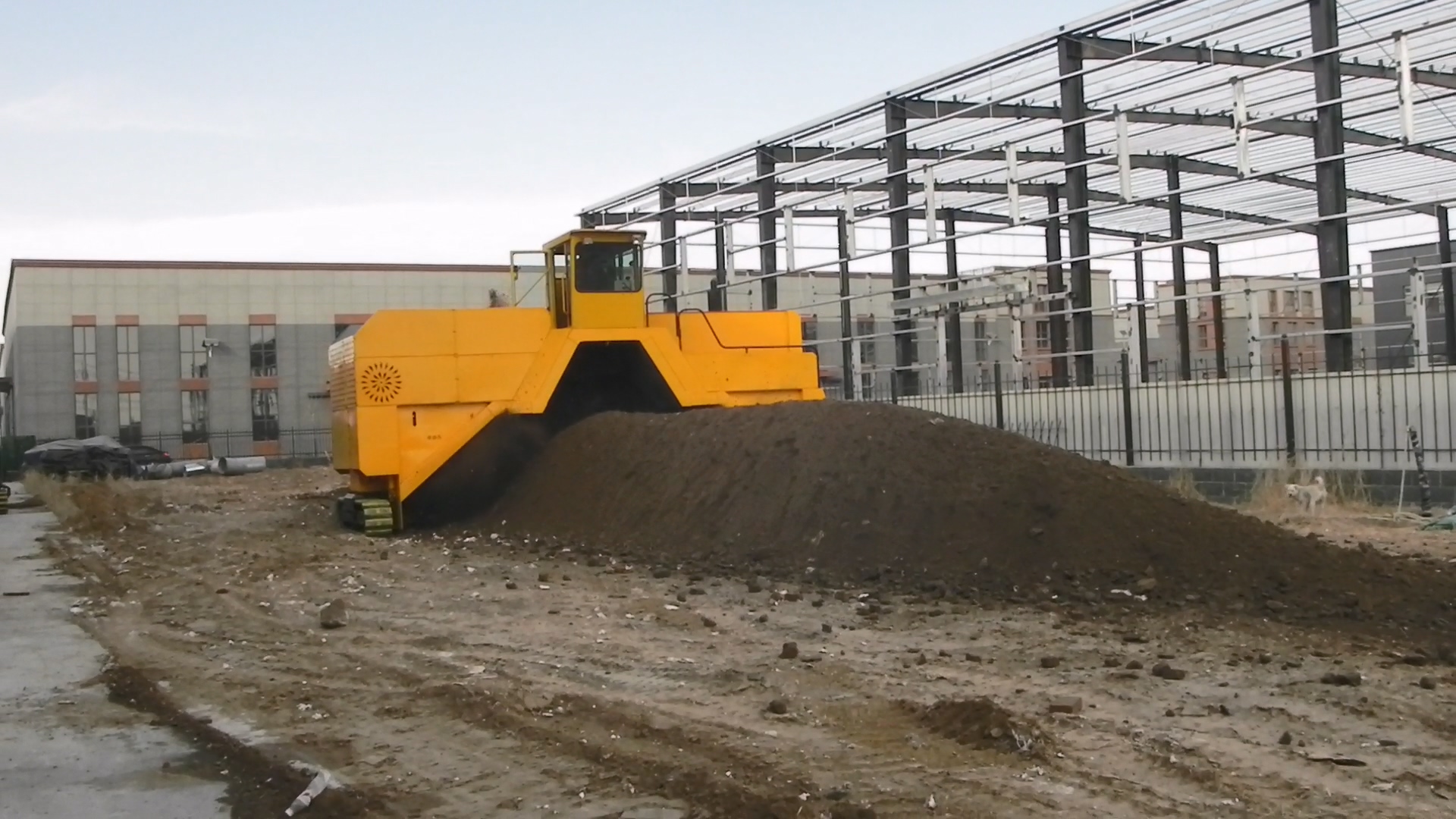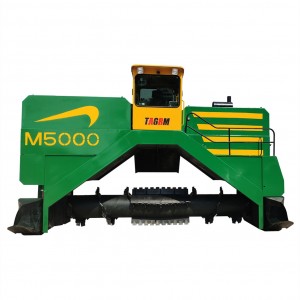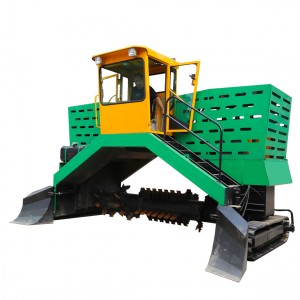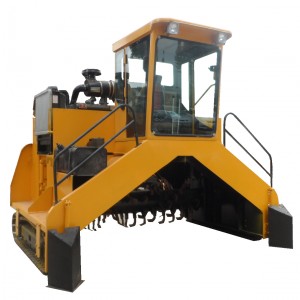M6500 Crawler Turner
With the increasing application of organic compost in agricultural production around the world, more and more large-scale compost plants have appeared, which has also stimulated the demand for high-horsepower compost turners. Because of the following advantages of high-horsepower compost turners:
Handle large amounts of organic waste: Large composting facilities handle large amounts of organic waste including sludge, food scraps, livestock manure, etc. High-horsepower compost turners can turn these large compost piles efficiently, ensuring fermentation occurs evenly throughout the large compost pile.
Efficient Mixing and Aeration: Efficient mixing and aeration are critical to successful composting. High-horsepower compost turners can thoroughly mix materials, introduce oxygen, and ensure that all parts of the compost pile are exposed to the same composting conditions. This promotes consistent decomposition and prevents the development of anaerobic zones.
Rapid decomposition: Large composting operations often have a higher demand for finished compost. High-horsepower tumblers speed up the composting process by creating optimal conditions for microorganisms to quickly break down organic matter. This allows the compost plant to maintain faster compost production and higher turnover rates.
Temperature Control: Maintaining the proper temperature in large compost windrows is critical for destroying pathogens and weed seeds and for efficient decomposition. High-horsepower compost turners can help distribute heat evenly throughout the compost, ensuring that the entire compost reaches the desired temperature.
After the success of the M3800 and M4800 large turners, TAGRM did not stop. In response to the needs of super large compost manufacturers, TAGRM launched the M6500 giant turner, redesigned the body structure, and placed the cockpit on the right side of the body. The power system is on the left side, which keeps the body balanced and stable, and is also convenient for transportation. In terms of power configuration, a 391-horsepower engine is used, which makes it easier to handle viscous materials such as sludge and livestock manure.
Product parameter
| Model | M6500 | Ground clearance | 100mm | H2 | |
| Rate Power |
288KW(MAX317KW)
|
WP12D317E201 | Ground pressure | 0.82Kg/cm² | |
| Rate speed | 1800r/min | Working width | 6500~7400mm | Max. | |
| Fuel consumption | ≤210g/KW·h | Working height | 2800mm | Max. | |
| Battery | 24V | 2×12V | Pile shape | Triangle | 42° |
| fuel capacity | 320L | Forward speed | L: 0-8m/min H: 0-24m/min | ||
| Crawler tread | 6885mm | W2 | Rear speed | L: 0-8m/min H:0-24m/min | |
| Crawler size | 2250×400mm | Steel with shoe | Feed port width | 6885 | |
| Oversize | 7890×3370×4500 mm | W3×L1×H1 | Turning radius | 3900mm | min |
| Weight | 13000kg | Without fuel | Drive mode | Hydraulic control | |
| Diameter of roller | 1080mm | With knife | Working capacity | 4350m³/h | Max. |
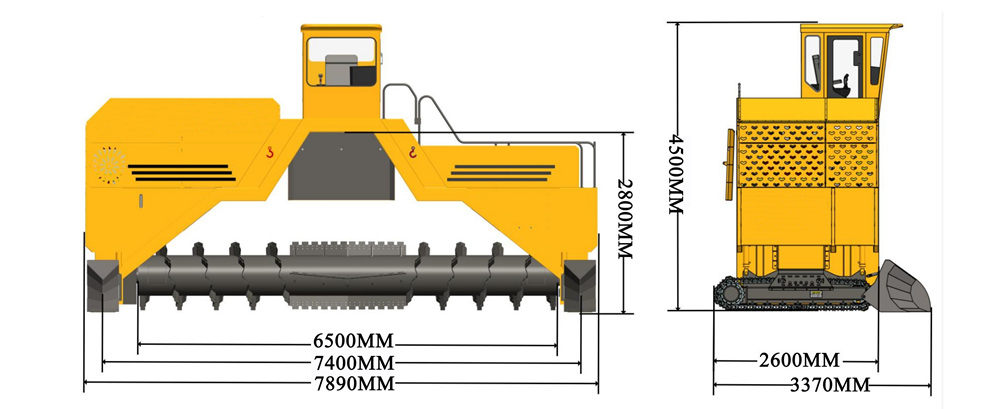

The function of the compost turner:
1. Stirring function in raw material conditioning.
In compost production, to adjust the carbon-nitrogen ratio, pH, water content, etc. of raw materials, some auxiliary materials must be added. The main raw materials and various auxiliary materials, which are roughly stacked together in proportion, can be mixed evenly by the turning and polishing machine to achieve the purpose of conditioning.
2. Adjust the temperature of the raw material pile.
During the operation of the compost turning machine, the raw material pellets are fully contacted and mixed with the air, and a large amount of fresh air can be contained in the material pile, which is helpful for aerobic microorganisms to actively generate fermentation heat, and the temperature of the pile rises; when the temperature is high, the supplement of fresh air can be used. Cool down the stack temperature. A state of alternating medium temperature - high temperature - medium temperature - the high temperature is formed, and various beneficial microorganisms grow and multiply rapidly in the temperature range they are adapted to.
3. Improve the permeability of the raw material windrow pile.
The turning system can process the material into small clumps, so that the viscous and dense material pile becomes fluffy and elastic, forming a suitable porosity.
4. Adjust the moisture of the raw material windrow pile.
The suitable water content of raw material fermentation is around 55%, and the moisture standard of finished organic fertilizer is below 20%. During fermentation, biochemical reactions will generate new water, and the consumption of raw materials by microorganisms will also cause water to lose its carrier and become free. Therefore, with the timely reduction of water during the fertilizer-making process, in addition to the evaporation formed by heat conduction, the turning of the raw material by the turning machine will form mandatory water vapor emission.
5. To realize the special requirements of the composting process.
For example, the crushing of raw materials, giving a certain shape to the raw material pile or realizing quantitative displacement of raw materials, etc.
The process of making compost:
1. Livestock and poultry manure and other materials, organic domestic waste, sludge, etc. are used as fertilizer base materials, pay attention to the carbon-nitrogen ratio (C/N): Since composting materials have different C/N ratios, we need to use The C/N ratio is controlled at the 25~35 that the microorganism likes and the fermentation can proceed smoothly. The C/N ratio of the finished compost is usually 15~25.
2. After the C/N ratio is adjusted, it can be mixed and stacked. The trick at this point is to adjust the overall moisture content of the compost to 50-60% before starting. If the water content of livestock and poultry manure and other materials, domestic garbage, sludge, etc. is too high, you can add organic matter, relatively dry auxiliary materials that can absorb water, or use the method of backflow to put the dry fertilizer below to form strips, and put the containing Livestock and poultry manure and other materials, domestic garbage, sludge, etc. with a large amount of water are placed in the middle so that the water above can seep to the bottom and then be turned over.
3. Stack the base material in strips on a flat surface. The stack width and height should be equal to the working width and height of the equipment as much as possible, and the specific length needs to be calculated. TAGRM's turners are equipped with integral hydraulic lifting and drum hydraulic lifting technology, which can adjust themselves to the maximum size of the stack.
4. Sprinkle the fertilizer base materials such as the piled livestock and poultry manure and other materials, domestic garbage, sludge, etc. with biological fermentation inoculants.
5. Use a turning machine to evenly mix the straw, livestock and poultry manure and other organic materials, domestic garbage, sludge, (water content should be 50%-60%), fermentation bacteria agent, etc., and it can be deodorized in 3-5 hours. , 16 hours to heat up to 50 degrees (about 122 degrees Fahrenheit), when the temperature reaches 55 degrees (about 131 degrees Fahrenheit), turn the heap again to add oxygen, and then start stirring whenever the temperature of the material reaches 55 degrees to achieve uniform fermentation, The effect of increasing oxygen and cooling, and then repeat this process until it is completely decomposed.
6. The general fertilization process takes 7-10 days. Due to different climates in different places, it may take 10-15 days for the material to be completely decomposed. high, potassium content increased. Powdered organic fertilizer is made.
Compost turning operation:
1. It can be controlled by both temperature and smell. If the temperature is higher than 70°C (about 158 degrees Fahrenheit), it should be turned over, and if you smell the smell of anaerobic ammonia, it should be turned over.
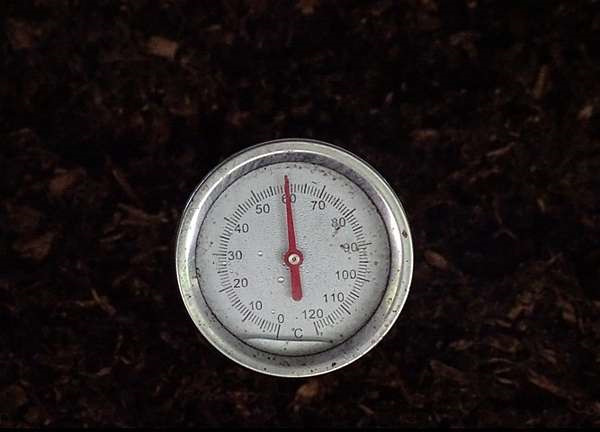
2. When turning the pile, the inner material should be turned outward, the outer material should be turned inside, the upper material should be turned downward, and the lower material should be turned upward. This ensures that the material is fully and evenly fermented.
Video


